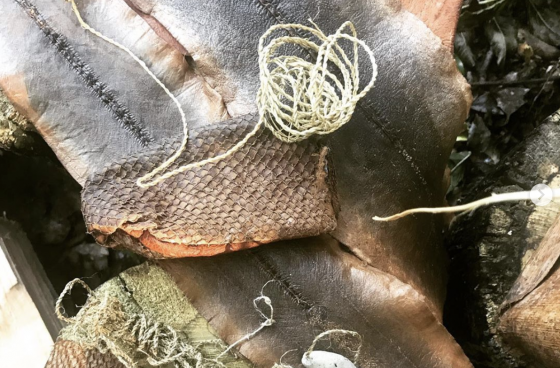Housek Fish Skin
Are you looking for a sustainable and eco-friendly way to repurpose fish waste? Look no further than housek fish skin. This often overlooked byproduct of the fishing industry is gaining attention for its versatility and potential as a material for fashion, accessories, and even furniture. In this article, we'll explore the world of housek fish skin and its many uses.
The Pain Points of Housek Fish Skin
As consumers become more aware of the environmental impact of their choices, there is a growing demand for sustainable and ethical fashion. However, the majority of the materials used in fashion are not sustainable, and can even be harmful to the environment. This is where housek fish skin comes in. By utilizing a material that would otherwise go to waste, we can reduce the environmental impact of fashion and other industries.
The Target of Housek Fish Skin
Housek fish skin is a versatile material that can be used in a variety of industries. In fashion, it is used to create shoes, bags, and belts, while in furniture and interior design, it adds a unique texture and versatility. Additionally, housek fish skin can be used for medicinal purposes due to its high collagen content, which makes it an excellent material for wound dressings and other medical applications.
Main Points Related to Housek Fish Skin
Housek fish skin is a sustainable and eco-friendly material that can be used in a variety of industries. Its high collagen content makes it suitable for medical applications, while in fashion and interior design, it adds a unique texture and versatility. By utilizing this byproduct of the fishing industry, we can reduce environmental waste and promote sustainability in our daily lives.
The Target and Personal Experience with Housek Fish Skin
When I first heard about housek fish skin, I was skeptical. Could a material that is typically discarded as waste really be useful in fashion and other industries? However, after researching the topic, I was amazed at the potential of housek fish skin. Its texture is unique and durable, making it an excellent material for shoes, bags, and accessories. Additionally, its high collagen content means it has potential in the medical industry as well.

One of the most exciting things about housek fish skin is that it is often dyed a variety of colors, making it a versatile material for designers and artists. Its texture and durability also mean that it can be used in furniture and interior design to add a unique touch to any space.
The Sustainability of Housek Fish Skin
One of the biggest advantages of using housek fish skin is its sustainability. By utilizing a material that would otherwise go to waste, we can reduce environmental waste and promote sustainability in fashion and other industries. Additionally, the use of housek fish skin supports small-scale fishing communities and promotes ethical practices within the fishing industry.

Furthermore, housek fish skin is a more durable and long-lasting material than many of the synthetic materials used in fashion and other industries. This means that products made from housek fish skin will last longer and reduce the amount of waste produced as a result of fast fashion and disposable products.
Question and Answer
What is housek fish skin?
Housek fish skin is a byproduct of the fishing industry that is often discarded as waste. However, it is a versatile material that can be used in fashion, furniture, and even medical applications.
What are the benefits of using housek fish skin?
Using housek fish skin promotes sustainability and reduces environmental waste. Additionally, it supports small-scale fishing communities and promotes ethical practices within the fishing industry.
What industries can utilize housek fish skin?
Housek fish skin can be used in a variety of industries, including fashion, furniture, and even medicine.
Is housek fish skin a durable material?
Yes, housek fish skin is a more durable and long-lasting material than many of the synthetic materials used in fashion and other industries.
Conclusion
Housek fish skin is a sustainable and eco-friendly material that can be used in a variety of industries. Its texture and durability make it an excellent material for fashion, furniture, and even medical applications. By utilizing this byproduct of the fishing industry, we can reduce environmental waste and promote sustainability in our daily lives.
Gallery
Fish Skin Tanning Course With Lucy O'Hagan | EXARC

Photo Credit by: bing.com / tanning hagan exarc
The Fish Skin Obsessions Around The World

Photo Credit by: bing.com /
Fish Skin.

Photo Credit by: bing.com /
Fish-skin | It Is A Blackboard Roof In Andorra | Marta Rabadan | Flickr

Photo Credit by: bing.com /
Fish Skin

Photo Credit by: bing.com / fish pesci